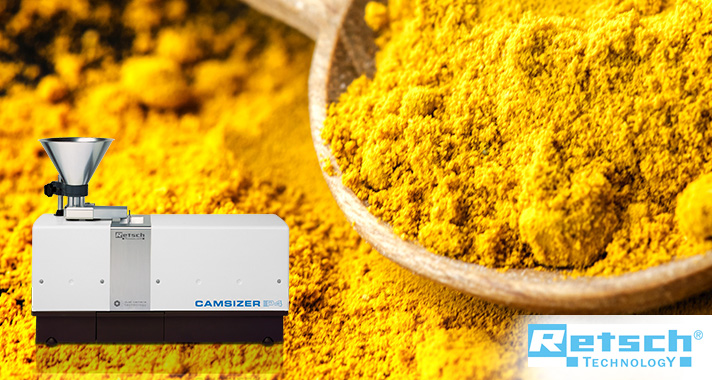Release rate as a function of granule size for 5 fractions. The smaller the granule, the greater the amount of theophylline released. There is a mathematical relationship between the rate of active substance release and the surface/volume ratio of the granules. If the cumulative amount of released theophylline is considered as a function of time then different release profiles are obtained for the various size fractions.
Pharmaceutical dry granulation
Pharmaceutical granules are, from a technical point of view, agglomerates that usually consist of a mixture of a medicinal agent and various excipients. The granules can be prepared by different methods. One of these is dry granulation, a simple and rapid method. Mixtures of powders containing the active substance are compressed with tablet presses or roller compactors to form larger units and are then reduced to the required granule size by using mills or sieve granulators.
Flow and compression properties
The different granule sizes produced in this way naturally have irregular shapes. Granulation is often used for obtaining a particular mixture quality as well as for improving the flow and compression properties of the powder mixture. A more recent field of application is the use of such dry granules as an independent form of drug, which release the active substances as uniform as possible throughout a certain period (8 – 12 hours). These so-called retard drug forms benefit the patient by having longer administration intervals and accordingly a reduced administration frequency when compared with conventional drug forms.
Release profile of unknown granule fractions
The CAMSIZER® digital image processing system is an efficient and timesaving alternative to conventional image analysis for characterising the size and shape of inhomogeneous particle collectives. By determining the surface/volume ratio it is possible to describe the individual granule fractions exactly. Data obtained in this way can be correlated with the release parameter k63.2% and in future will permit a prediction to be made about the release profile of unknown granule fractions.
Stefanie Christian; Dr. Karl G. Wagner
Chair of Pharmaceutical Technology, University of Tübingen
Tübingen, Germany
Download the complete White Paper below.









